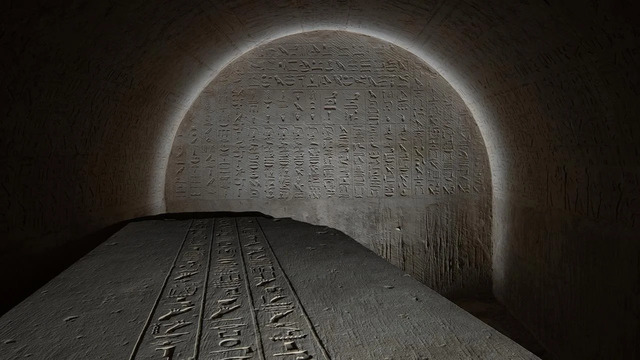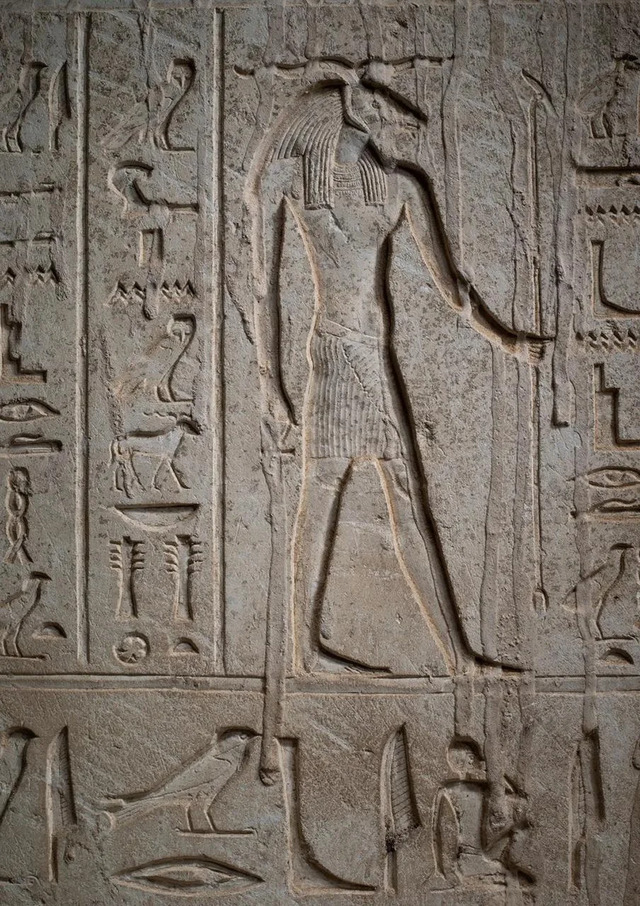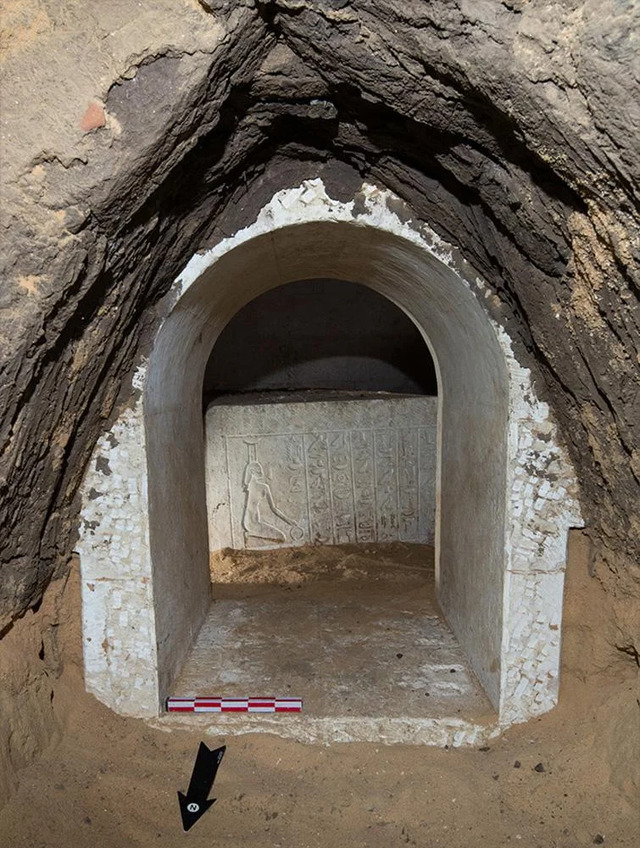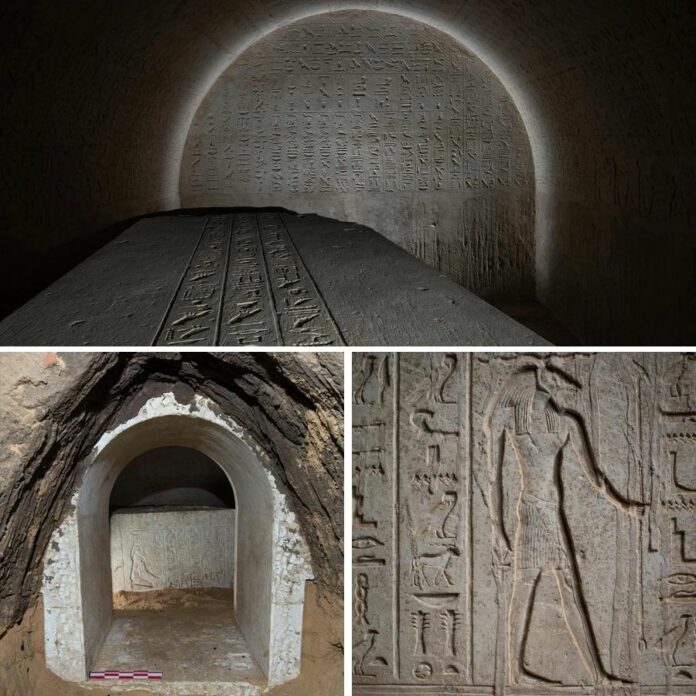In the deserts of Egypt’s Abusir necropolis, archaeologists from the Czech Institute of Egyptology uncovered a hidden treasure: the tomb of Djehutyemhat, a royal scribe who lived during the 26th–27th dynasties. This extraordinary discovery not only sheds light on ancient Egyptian burial practices but also reveals unique spells designed to protect against venomous snake bites, reflecting the fears and beliefs of a bygone era. The tomb’s intricate designs and inscriptions offer a fascinating glimpse into the life and death of an elite official in one of Egypt’s most turbulent periods.
A Hidden Gem in Abusir
The tomb of Djehutyemhat was unearthed in the western region of Abusir, a cemetery reserved for Egypt’s elite, including military commanders and high-ranking officials. This burial site dates back to the mid-1st millennium BCE, a period when Egypt was grappling with Persian invasions and internal upheavals. The tomb itself, a medium-sized shaft buried nearly 50 feet below ground, provided archaeologists with invaluable insights into ancient Egyptian burial traditions and rituals.
Despite the destruction of its upper sections in antiquity, the burial chamber remained remarkably intact. The site was richly decorated with religious imagery, inscriptions, and a large stone sarcophagus that underscored the significance of Djehutyemhat’s position as a royal scribe. Such preservation has allowed researchers to reconstruct the life and death of this young official, who served during a critical chapter in Egyptian history.
Djehutyemhat: A Scribe in Tumultuous Times
Djehutyemhat served as a royal scribe, a highly prestigious role in ancient Egypt. Scribes were indispensable to the administration of the state, tasked with record-keeping, drafting official decrees, and preserving religious and literary texts. His position indicates not only his literacy but also his intimate involvement in the royal court and religious practices.
The period during which Djehutyemhat lived was fraught with challenges. Egypt faced invasions from the Persian Empire, which brought significant political and cultural transformations. Despite these upheavals, the Egyptians clung to their traditions, as evidenced by the detailed craftsmanship of Djehutyemhat’s tomb.
Anthropological studies of his skeletal remains suggest that Djehutyemhat died at the young age of 25. Signs of spinal wear and severe osteoporosis were evident, likely resulting from his sedentary lifestyle as a scribe. These health conditions reflect the physical toll of elite but stationary work and provide a poignant reminder of the challenges faced even by those in privileged positions.

Magical Spells and Snake Protection
One of the tomb’s most remarkable features is the northern wall, which is inscribed with protective spells against snake bites. In ancient Egyptian culture, snakes were both feared as venomous threats and revered as symbols of protection. The inscriptions portray snakes as guardians, tasked with shielding the tomb’s occupant from harm. This dual role highlights the complex relationship Egyptians had with these creatures, blending fear with reverence.
The southern and western walls of the burial chamber depict ritual offerings, while the ceiling illustrates the sun’s journey across the sky, symbolizing the cycle of life, death, and rebirth. These celestial and ritualistic elements reflect the Egyptians’ profound spiritual beliefs and their meticulous preparations for the afterlife.
At the heart of the tomb lies a massive stone sarcophagus adorned with hieroglyphs and images of gods. Among the inscriptions are excerpts from the Book of the Dead, a collection of funerary texts designed to guide the deceased through the perilous journey of the afterlife. These texts provided instructions and magical spells to help the deceased overcome challenges, ensuring their safe passage to eternal life.

The Role of Imentet in the Afterlife
Inside the sarcophagus, the goddess Imentet is prominently depicted. Known as the “Goddess of the West,” Imentet was believed to guide and protect souls as they transitioned to the afterlife. Her presence in the tomb underscores the spiritual significance of Djehutyemhat’s burial, symbolizing her role as both a guardian and a motherly figure for the deceased.
The inclusion of Imentet highlights the care and devotion that went into preparing the tomb. Every detail, from the inscriptions to the imagery, was designed to ensure Djehutyemhat’s smooth transition to the afterlife. This level of detail also reflects the social status and wealth of the scribe, who was afforded such elaborate preparations despite his relatively young age at death.

Artifacts and Daily Life
Though the tomb had been looted in the 5th century CE, archaeologists still uncovered a modest collection of artifacts. These included pottery jars and bowls, which once held offerings for the afterlife. While seemingly mundane, these items provide a glimpse into the daily lives and rituals of ancient Egyptians. They also highlight the enduring importance of providing sustenance for the deceased in the afterlife.
The anthropological analysis revealed intriguing similarities between Djehutyemhat’s remains and those found in nearby tombs. This suggests possible familial or communal ties among the tomb’s occupants, offering valuable insights into the social dynamics of ancient Egyptian elites.
Rituals, Beliefs, and Legacy
The tomb of Djehutyemhat stands as a testament to the complexity of ancient Egyptian burial practices and beliefs. From the protective spells to the celestial imagery, every element of the tomb reflects a deep understanding of the spiritual world and the challenges of navigating the afterlife.
The magical spells against snake bites, in particular, highlight the practical concerns of the living. Venomous snakes were a real and present danger in ancient Egypt, and their inclusion in tomb decorations speaks to the intertwined nature of religion, magic, and daily life. These spells reveal a culture deeply attuned to both the physical and spiritual realms, seeking protection and guidance in all aspects of existence.
Conclusion
The discovery of Djehutyemhat’s tomb at Abusir offers an extraordinary window into the life, beliefs, and rituals of ancient Egypt. As a royal scribe, Djehutyemhat occupied a unique position at the intersection of administration and religion, reflected in the intricate craftsmanship of his burial chamber. The protective spells, celestial depictions, and artifacts recovered from the tomb illuminate the fears and aspirations of a society navigating both earthly dangers and spiritual challenges.
This remarkable find underscores the enduring legacy of ancient Egypt’s cultural and religious traditions. As archaeologists continue to study the site, the tomb of Djehutyemhat provides not only a glimpse into the past but also a testament to humanity’s timeless quest for protection, guidance, and eternal life.
